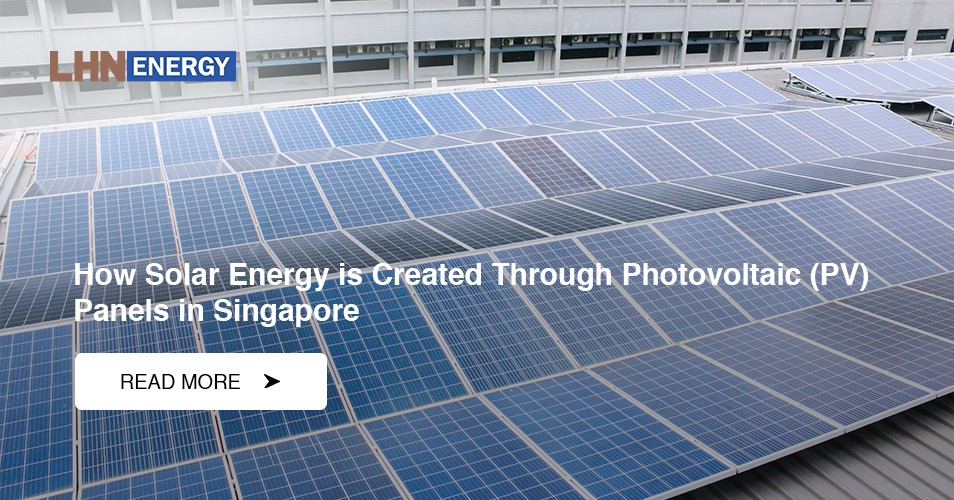How Solar Energy is Created Through Photovoltaic (PV) Panels in Singapore
Key Takeaways
- Solar energy in Singapore is created through the photovoltaic effect, where PV panels convert sunlight into usable electricity.
- The efficiency of a solar photovoltaic system depends on factors such as sunlight intensity, panel orientation, temperature, and proper system sizing.
- With regular solar panel maintenance and smart monitoring, homeowners can maximise energy output and enjoy long-term savings.
Introduction
Switching on the lights, powering your laptop, or keeping the aircon running—electricity powers almost every part of daily life in Singapore. But with rising energy costs and growing environmental concerns, many are asking: Is there a cleaner, smarter way to power our future?
Enter solar energy. By harnessing Singapore’s abundant sunshine, homeowners and businesses alike are turning rooftops into power stations through advanced photovoltaic (PV) technology.
But what is it exactly?
1. Introduction to Solar Energy and PV Systems
In sunny Singapore, where sustainability is increasingly prioritised, solar energy has emerged as a practical and eco-friendly solution. With consistent sunlight throughout the year, tapping into this renewable source is not only good for the environment but also reduces reliance on traditional energy sources.
At the heart of this shift lies the solar photovoltaic system, which transforms sunlight into usable power. A complete system typically includes solar PV panels, inverters, and electrical connections that work together to deliver electricity to homes and businesses.
2. The Photovoltaic Effect: How PV Panels Generate Electricity
So, how do solar panels actually turn sunlight into energy? The answer lies in the photovoltaic effect. When sunlight, made up of tiny particles called photons, hits the surface of a PV panel, it excites electrons within the semiconductor material, usually silicon. This movement of electrons produces direct current (DC) electricity.
Since most households and businesses use alternating current (AC), an inverter is required to convert DC into AC. This simple yet ingenious process allows the system to capture and convert abundant sunlight into clean, reliable power.
3. Components of a Solar PV System and Their Function
A solar energy setup is more than just panels on a roof—it’s a coordinated system designed for efficiency. The solar system solar panels come in different types, each offering unique characteristics and levels of energy conversion efficiency:
- Monocrystalline panels – Made from a single crystal of silicon, they are highly efficient and space-saving, with a sleek black appearance.
- Polycrystalline panels – Produced from multiple silicon fragments, they are slightly less efficient but more cost-effective, with a bluish tone.
- Thin-film panels – Lightweight and flexible, they can be installed on unconventional surfaces but generally have lower efficiency compared to crystalline options.
Equally important are the wiring and electrical connections, which ensure the electricity generated flows smoothly either into your home or back to the power grid. With proper PV panel installation, these components work seamlessly to provide reliable energy every day.
4. Factors Affecting Energy Generation
Not all systems perform the same. The amount of electricity produced depends on several factors, including:
- Sunlight intensity – Bright, sunny days generate more electricity, while cloudy weather naturally reduces output.
- Panel orientation and tilt – Correct angling ensures panels capture maximum sunlight throughout the day.
- Temperature – Higher heat can slightly reduce panel efficiency, even in sunny conditions.
- Shading – Trees, nearby buildings, or obstructions can block sunlight and lower performance.
- System sizing (kWp) – The overall size of the system determines how much energy can be generated under optimal conditions.
By optimising these factors, households in Singapore can better align their system’s production with their energy consumption needs.
5. Monitoring and Optimising PV Energy Production
Today, modern solar systems are smarter than ever. With monitoring tools, homeowners can track how much energy their panels are generating in real time. These systems also highlight inefficiencies, such as energy losses caused by dirt, dust, or minor technical issues.
With regular solar panel maintenance, you can also ensure your investment continues to perform at its best, while timely inspections and cleaning help extend the lifespan of your panels. By combining smart monitoring with proactive care, you can maximise returns and enjoy cleaner, more sustainable energy for years to come.
By understanding how solar energy is created and the role of each component, Singaporeans can make informed decisions about adopting clean energy solutions. A well-designed system not only reduces carbon footprints but also delivers long-term savings and energy independence.
At LHN Energy, we specialise in helping you make the switch to sustainable power with tailored solar solutions that fit your needs. From installation to long-term support, our team ensures you get the most out of your investment. Ready to harness the power of the sun? Contact us today to explore how we can transform your energy future.

